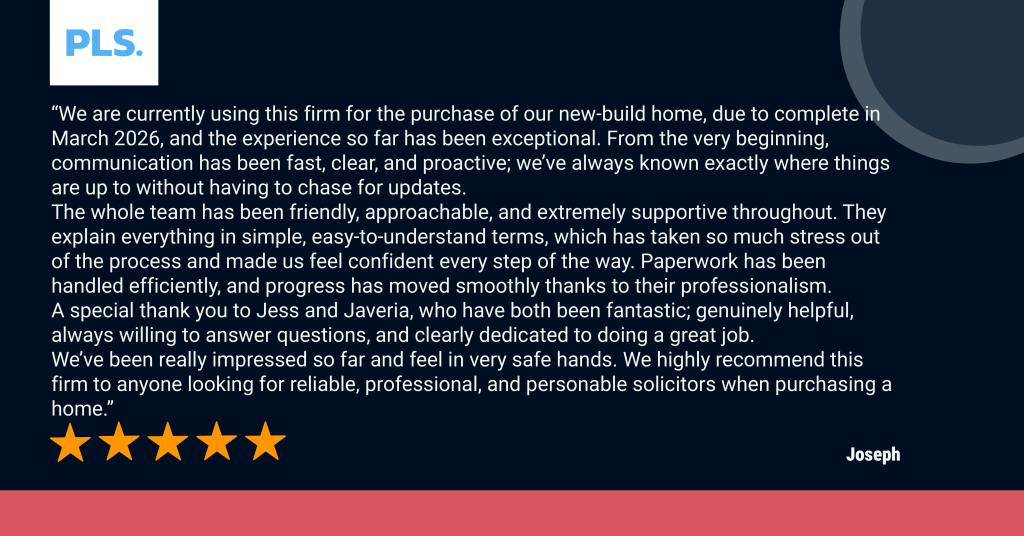Since becoming available in 2013, the Help to Buy model has evolved. Here at PLS, many of our customers are utilising the service to take advantage of a larger deposit when looking to buy their new property. But we always find that with most government schemes, there is a certain amount of confusion or misunderstanding.
To clear things up, Rebecca Fulton, Associate Director at PLS, has jotted down her insight into the Help to Buy scheme and how you can use it to its full advantage.
What is Help to Buy?
Rebecca: Help to Buy is a government scheme launched over 5-years ago to help those struggling to buy a house get on the ladder. Back in 2013, the UK was facing a housing shortage with the majority of first-time buyers priced out of the market. This scheme has effectively been a ‘hit two birds with one stone’ sort of option as it only includes new builds. The emphasis being on the builders and contractors to take up the scheme, build more new houses and get those struggling onto the property ladder once and for all.
What are the practicalities of the scheme?
Rebecca: Essentially it gives those struggling to find an acceptable deposit an extra helping hand. Once a buyer has reached a minimum of 5% for a deposit on their own, the government then provides an equity loan for up to 20% of the property value which goes up to 40% for properties in London. The remaining funds are expected to come from a mortgage. What this means to the average family looking to buy is that they can often stretch to a bigger home than their budget first allows, meaning perhaps instead of looking at a 2-bed and then thinking of getting a larger place in a few years time, they can jump straight to a 3-bed and settle for longer.
How do people pay back the loan?
Rebecca: The best thing about the Help to Buy is that you don’t have to pay anything back for the first 5-years – well, not quite. You do have to pay £1 a month to keep your details up to date with the government but those first 5-years are there to give you a bit of breathing space. After that the loan is subject to an additional interest fee of 1.75% per annum on the outstanding amount then rising each year by the increase in RPI plus 1%. This means that after the 5-years is up you will only be paying back repayments on the interest, so if you’d prefer to pay off the capital then it might be better at looking to pay it off sooner and look into early repayments.
Anything to think about?
Rebecca: It just depends where you want to buy really, the scheme is available in England and Wales although the process in Wales is slightly different. The thing to consider, as well, is that this is a scheme managed by the Homes and Communities Agency, so it’s another body that will have an interest in your mortgage. This can make the administration more lengthy on the solicitors’ side, and also add a small price to the package, usually under £200. It’s also dealt with directly by the builder of the house, so you will never see that extra 20% or 40%, it goes straight to them which means you need to check that they offer the scheme before you buy.
Top tips:
- The Help to Buy scheme is NOT just for first-time buyers, you just have to have no other interest in a home at the moment.
- Once you have a 5% deposit saved up you can gain up to an additional 20% of the property price (40% in London) from the Help to Buy to give you a helping hand.
- You need to remember that this is a loan and you are expected to pay interest payments after 5-years, but that doesn’t stop you from paying back all or part of the loan before if you have the funds.
- If you sell the property you will have to return the Help to Buy money in a lump sum.
- The Help to Buy scheme is fixed against a percentage of the house price, so if your house rises in value expect to pay more, equally if it drops for whatever reason you will pay less.
- You can use the Help to Buy scheme more than once as long as you have no other interest in any other property at the time you use it. We’re seeing people now at PLS who have bought a new build via the scheme, sold it and are now using the scheme again.
- You can ONLY buy a new build using the Help to Buy scheme.
- You can combine a Help to Buy ISA (where users pay money into an ISA and are then given a cash bonus from the government when purchasing a property) with the Help to Buy scheme to maximise the amount of money available.
- Be prepared to pay slightly more for completion when using a Help to Buy scheme as there are more checks needed when dealing with a third party (the Homes and Communities Agency) this could potentially be around £200 extra.
- Make sure your builder is registered in the Help to Buy scheme before you agree to purchase the property, or you won’t be able to use the scheme. This also doesn’t stop you agreeing to specific deals or rates with them directly if you want to negotiate further.


